Weather was very promising and I had to decide between taking fotos of Saturn and Jupiter or doing a real first deepsky session with my new system. I decided for deepsky.
But not all things did go well - the guiding camera (TIS DMK21AU.04) did not cooperate with the guiding program (PHD2). So I had to run the motors without guiding. All other stuff went smooth.
I chose for a field around the relatively small galaxy NGC7331 and I discovered that I would have the famous Stephan's Quintett in that frame as well.
I never took a sampling time of an hour before. But all went easy and at the end I even continued with some only 12 minutes sequences of imaging the very small galaxy NGC7640, the Blue Snowball NGC7662 and M45 Plejads, which seem to burn holes into the photo chip. And despite the guiding was not working, the stars came out somewhat round.
The 12 minutes sequences were too short, but I wanted to know, what it does in that short period of time.
Last updated : 19 November 2023
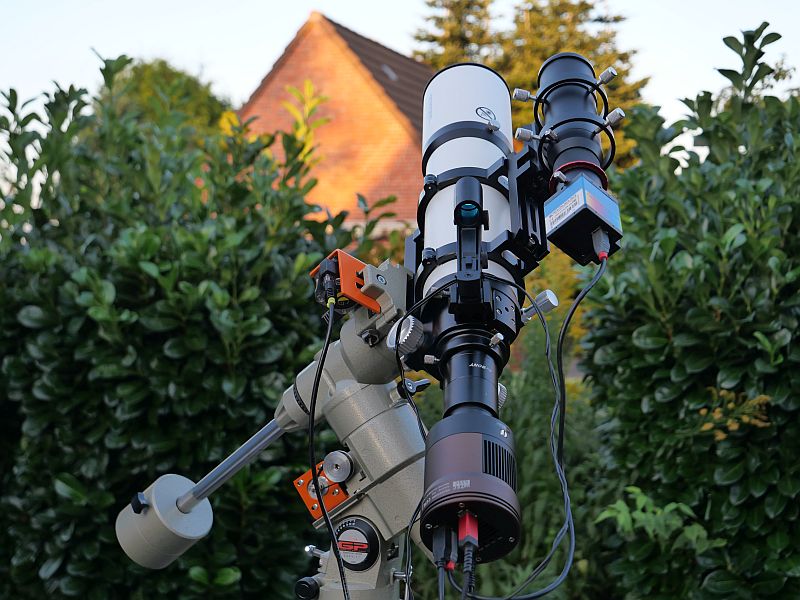
My new imaging machine with the APO 85/510 mm refractor and the Omegon IMX533C sensor,
the 50/210 mm guide scope and the DMK camera, all on my old GP mount, which is running better than ever ...
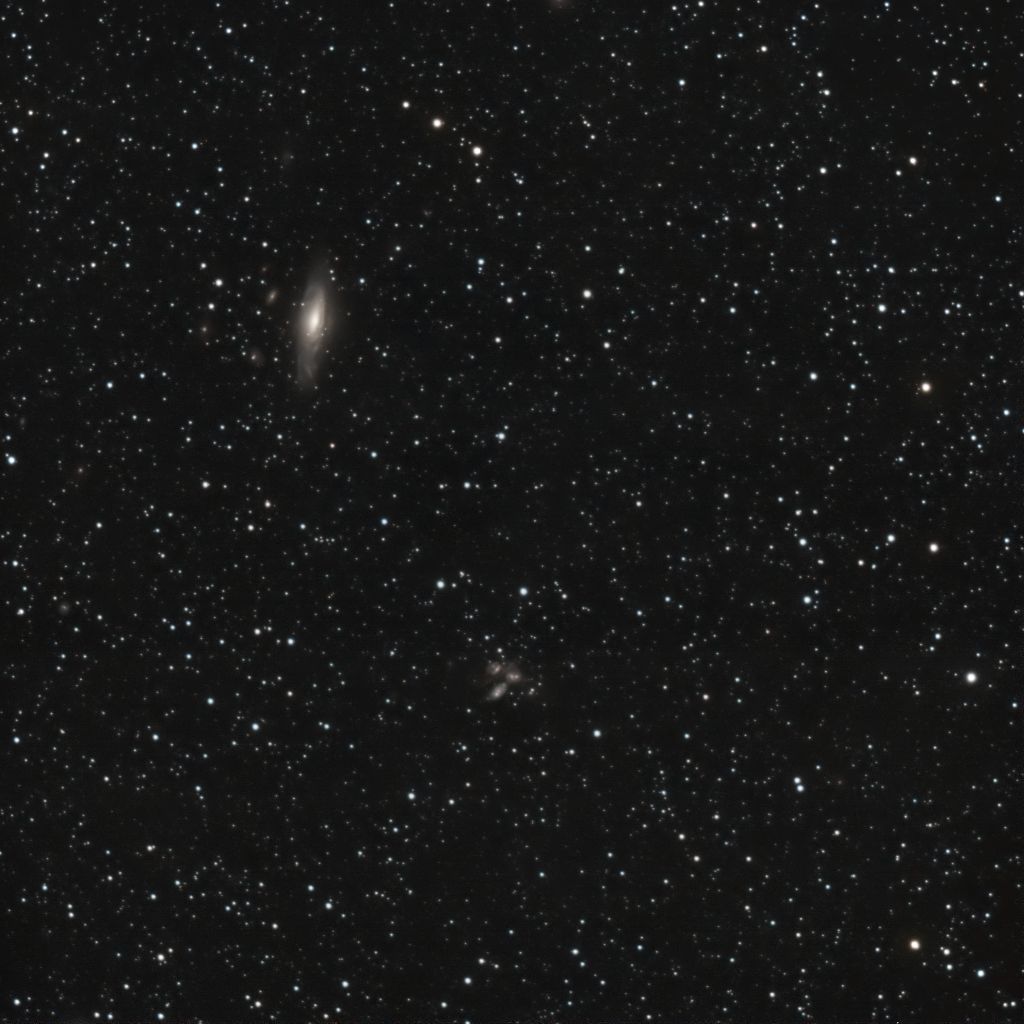
The small galaxy NGC7331 (NGC7331/Stephan's Quintett by Capella Observatory) on the upper left and Stephan's Quintett (Das Quintett Bild vom JWST) more to the lower centre.
15 September 2023 - 2044 UT - 61x120 seconds (1 hour 2 min) - Omegon veTec IMX533C (Gain 325 Offset 150)- APO 85/510 - NO guiding
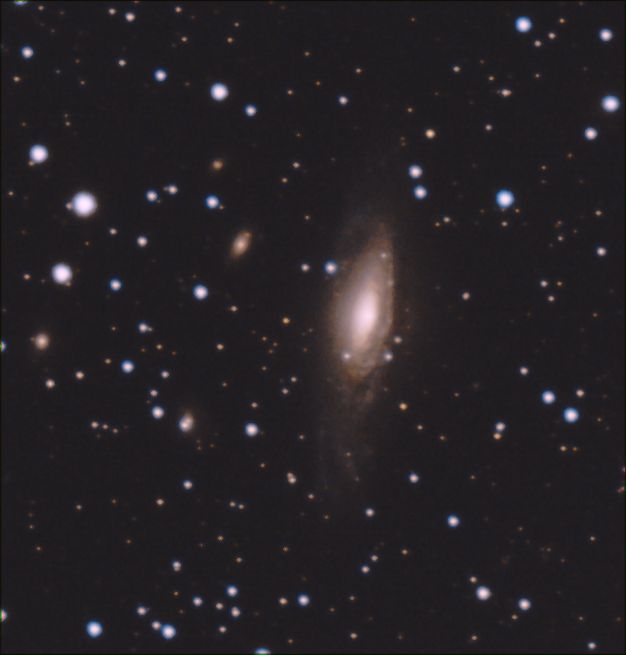
This is a full size crop from the image above and careful treatment of the NGC7331 galaxy as far as I am capable of doing so.
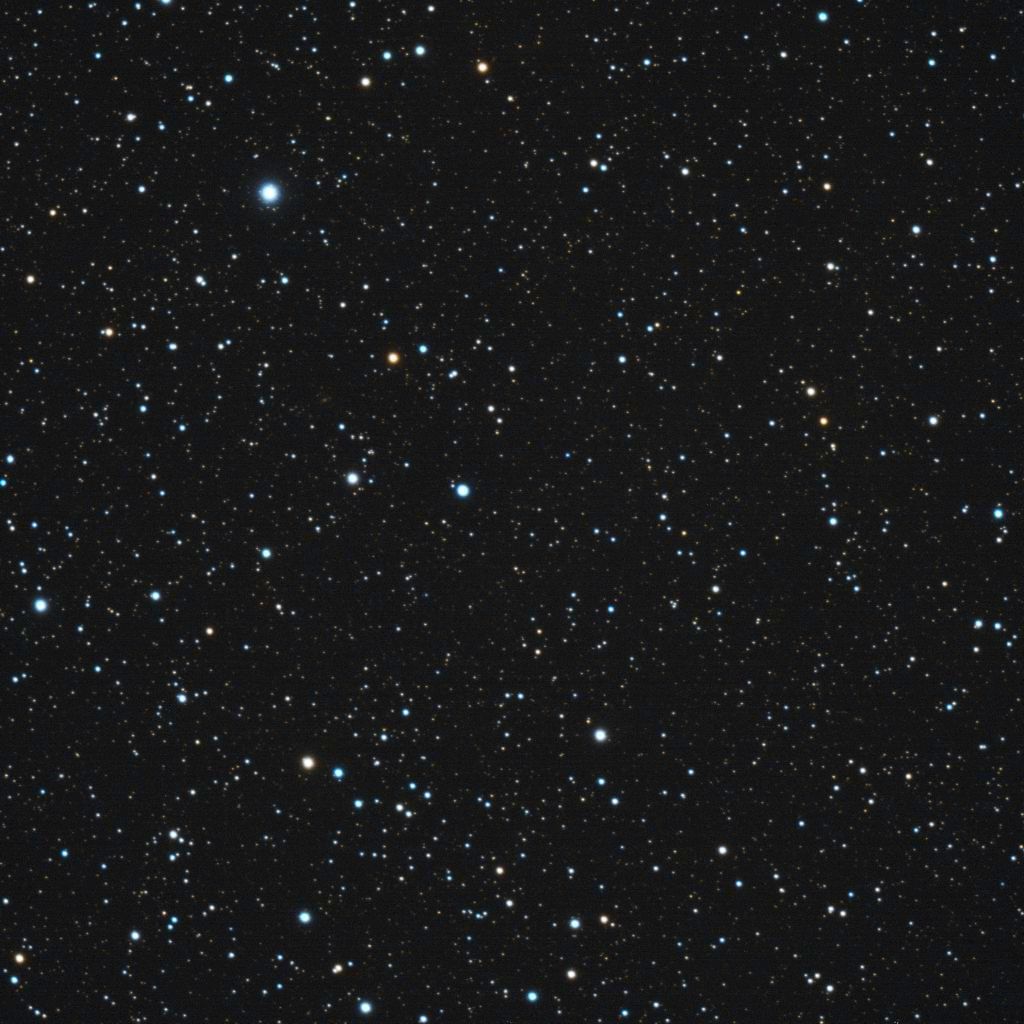
The very tiny Blue Snowball NGC7662 (Der Blaue Schneeball NGC 7662), that blueish spot in about the centre of this image.
- I just wanted to have it imaged. It is very bright, but very small.
15 September 2023 - 2153 UT - 6x120 seconds (12 min) - Omegon veTec IMX533C - APO 85/510 - NO guiding
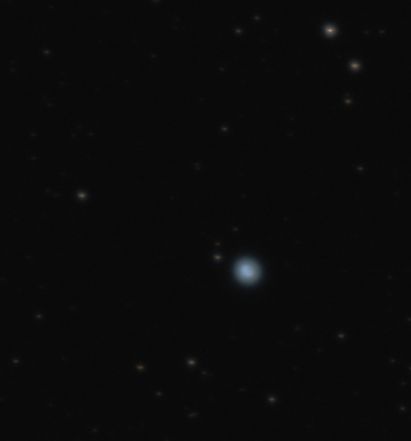
This is a small fullsize crop of a special treatment of the image above. Besides you can see the incorrect tracking,
I could work out some structure inside that nebula. Yes it is a little too small for my refractor.
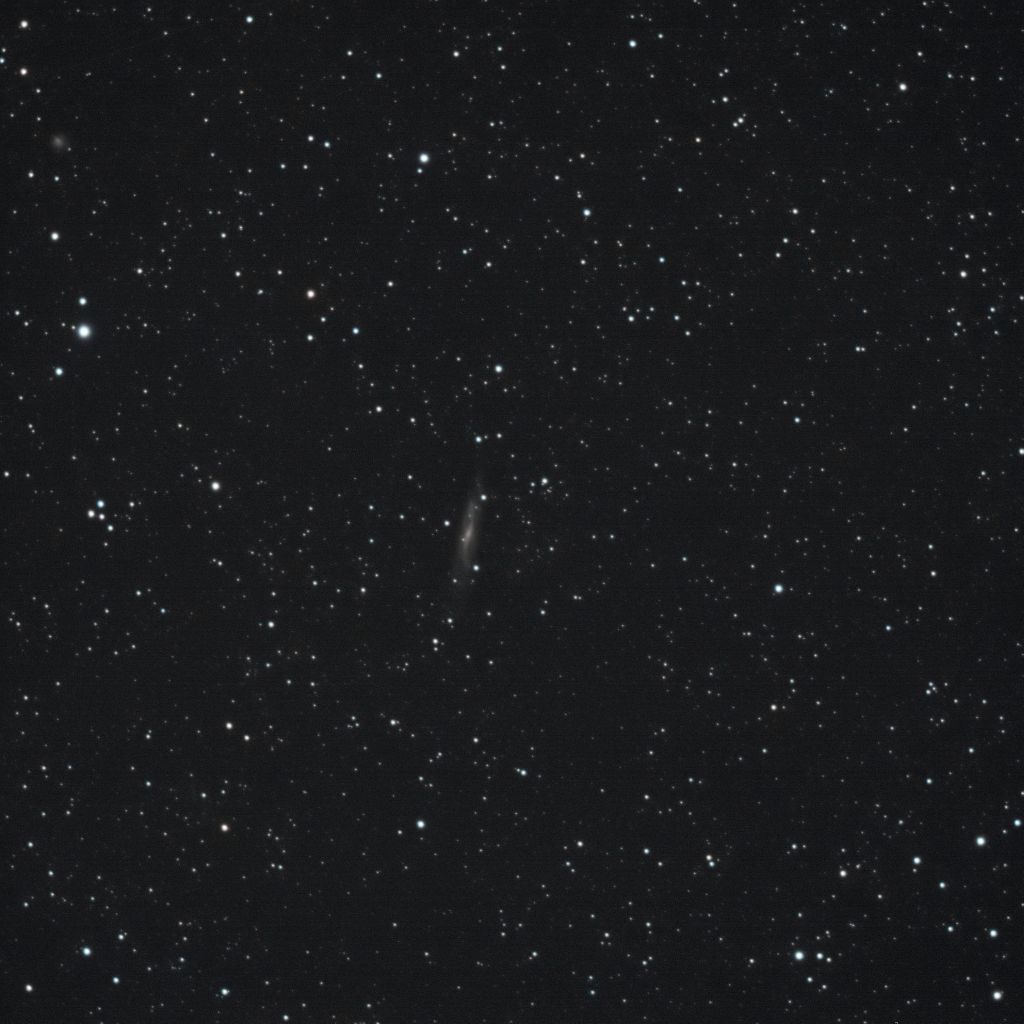
Not far off from NGC7662 you will find the dim and small galaxy NGC7640 (Capella Observatorium) NGC 7640 in Andromeda). It's size is less than a quarter of the Moon's diameter. And this image is only 12 minutes.
15 September 2023 - 2207 UT - 6x120 seconds (12 min) - Omegon veTec IMX533C - APO 85/510 - NO guiding
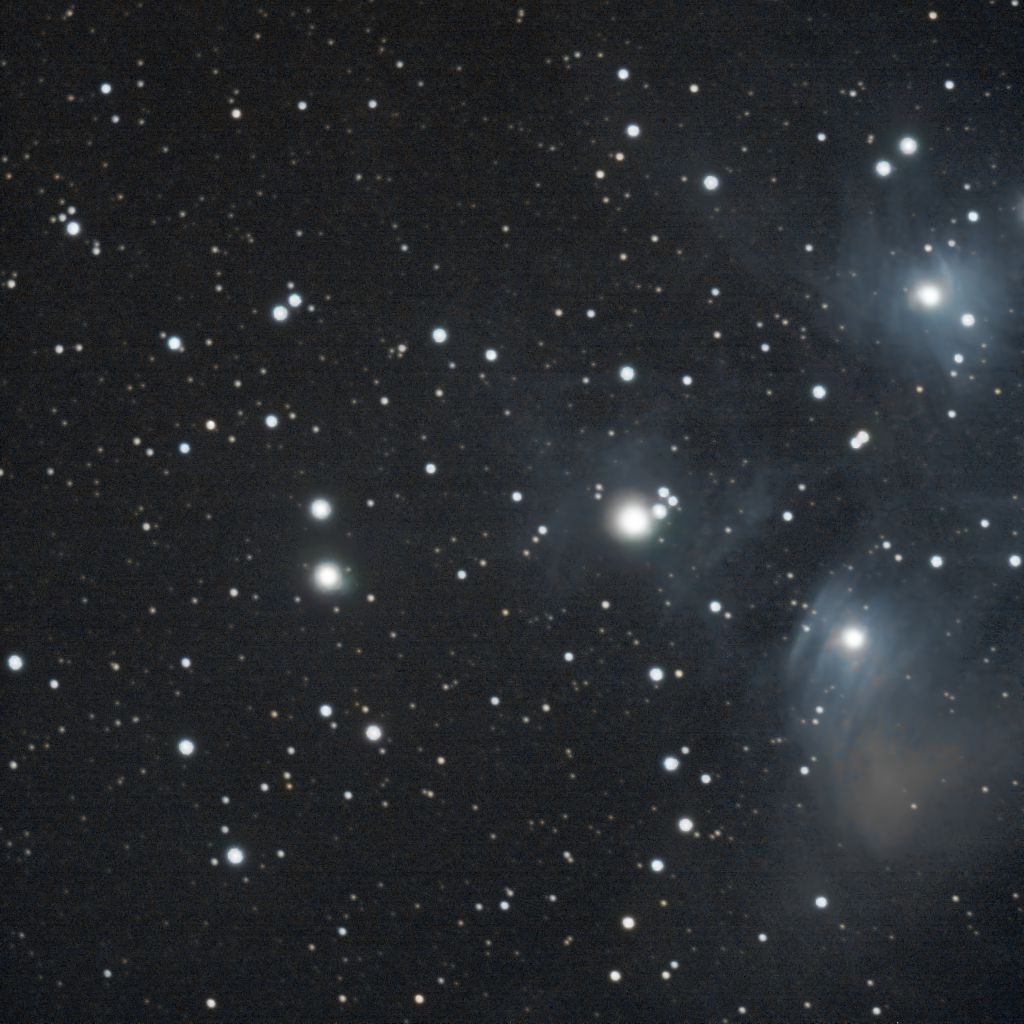
The Plejads M45 were already high up in the sky and I just gave them a try. This is, what came out. There is some - what we call - banding. This came in with the Dark field noise correcting. I have to check, what this means.
15 September 2023 - 2238 UT - 6x120 seconds (12 min) - Omegon veTec IMX533C - APO 85/510 - NO guiding
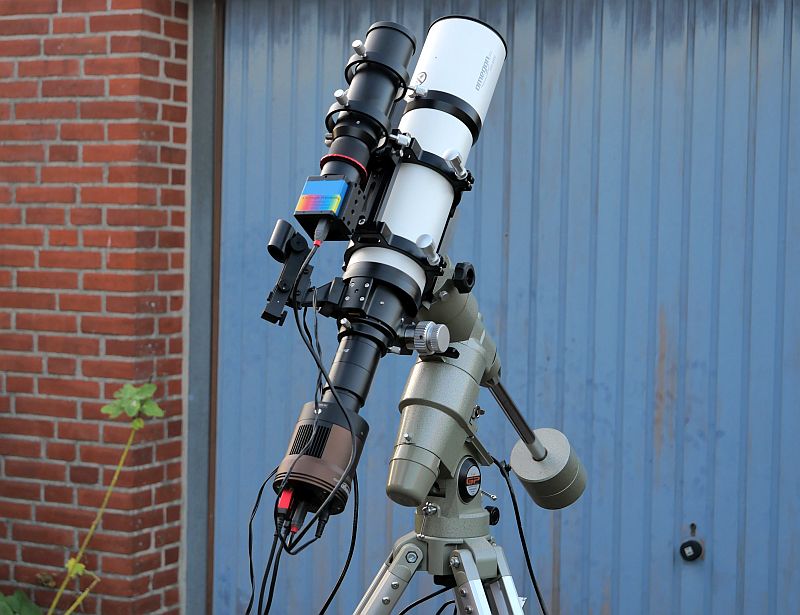
Another view of the imaging machine.
Equipment
Optics : Omegon Pro AP Triplet ED FCD-100 d=85 f=510mm Apochromat (f=1/6) : Intes MK-67 Maksutov Type Reflector d=150mm f=1800mm (f=1/12) Camera : Omegon veTec 533 C Colour CMOS Camera with IMX533 square 9MP sensor 3,75Ám pixels : QHY 5III715C Colour CMOS IMX715 8,2MP sensor 1,45um pixels high speed : NIKON D7000 DSLR unmodified (from 2011) : The Imaging Source DMK21AU4.AS monochrome USB highspeed camera : Panasonic LUMIX G110 MFT System (from 2021) Filter : IR/UV Cut, Astronomik H-Alpha, Astronomik LRGB set + filter drawer add. optics : ED 2x Barlow lens, eyepiece projection : 35mm, 50mm, 135mm and 200mm NIKON lenses available : 2.8/60mm Sigma, 12 .. 60mm Leica for MFT system Mount : VIXEN GP Highspeed Step Motors (Non Vixen Motors) Controller : EQStar Pro (since May 2023) Guiding : PHD2 Aquisition : DELL Notebooks (Windows 10 & Windows 11), SharpCap, FireCapture and others Image Processing : DeepSkyStacker, Siril, Gimp and others latest list update : September 2023